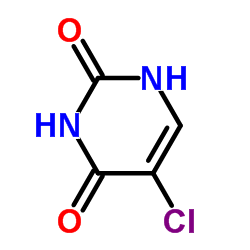Comparative study of HOCl-inflicted damage to bacterial DNA ex vivo and within cells.
Christine Suquet, Jeffrey J Warren, Nimulrith Seth, James K Hurst
Index: Arch. Biochem. Biophys. 493(2) , 135-42, (2010)
Full Text: HTML
Abstract
The prospects for using bacterial DNA as an intrinsic probe for HOCl and secondary oxidants/chlorinating agents associated with it has been evaluated using both in vitro and in vivo studies. Single-strand and double-strand breaks occurred in bare plasmid DNA that had been exposed to high levels of HOCl, although these reactions were very inefficient compared to polynucleotide chain cleavage caused by the OH.-generating reagent, peroxynitrite. Plasmid nicking was not increased when intact Escherichia coli were exposed to HOCl; rather, the amount of recoverable plasmid diminished in a dose-dependent manner. At concentration levels of HOCl exceeding lethal doses, genomic bacterial DNA underwent extensive fragmentation and the amount of precipitable DNA-protein complexes increased several-fold. The 5-chlorocytosine content of plasmid and genomic DNA isolated from HOCl-exposed E. coli was also slightly elevated above controls, as measured by mass spectrometry of the deaminated product, 5-chlorouracil. However, the yields were not dose-dependent over the bactericidal concentration range. Genomic DNA recovered from E. coli that had been subjected to phagocytosis by human neutrophils occasionally showed small increases in 5-chlorocytosine content when compared to analogous cellular reactions where myeloperoxidase activity was inhibited by azide ion. Overall, the amount of isolable 5-chlorouracil from the HOCl-exposed bacterial cells was far less than the damage manifested in polynucleotide bond cleavage and cross-linking.Copyright (c) 2009 Elsevier Inc. All rights reserved.
Related Compounds
| Structure | Name/CAS No. | Molecular Formula | Articles |
|---|---|---|---|
 |
5-Chlorouracil
CAS:1820-81-1 |
C4H3ClN2O2 |
|
Electron attachment to chlorouracil: a comparison between 6-...
2004-01-08 [J. Chem. Phys. 120 , 704-709, (2004)] |
|
Polymerase incorporation and miscoding properties of 5-chlor...
2010-04-19 [Chem. Res. Toxicol. 23 , 740-748, (2010)] |
|
Myeloperoxidase generates 5-chlorouracil in human atheroscle...
2006-02-10 [J. Biol. Chem. 281(6) , 3096-104, (2006)] |
|
Synthesis and characterization of oligonucleotides containin...
2004-09-01 [Chem. Res. Toxicol. 17(9) , 1236-44, (2004)] |
|
5-Chlorouracil, a marker of DNA damage from hypochlorous aci...
2003-08-29 [J. Biol. Chem. 278(35) , 32834-40, (2003)] |